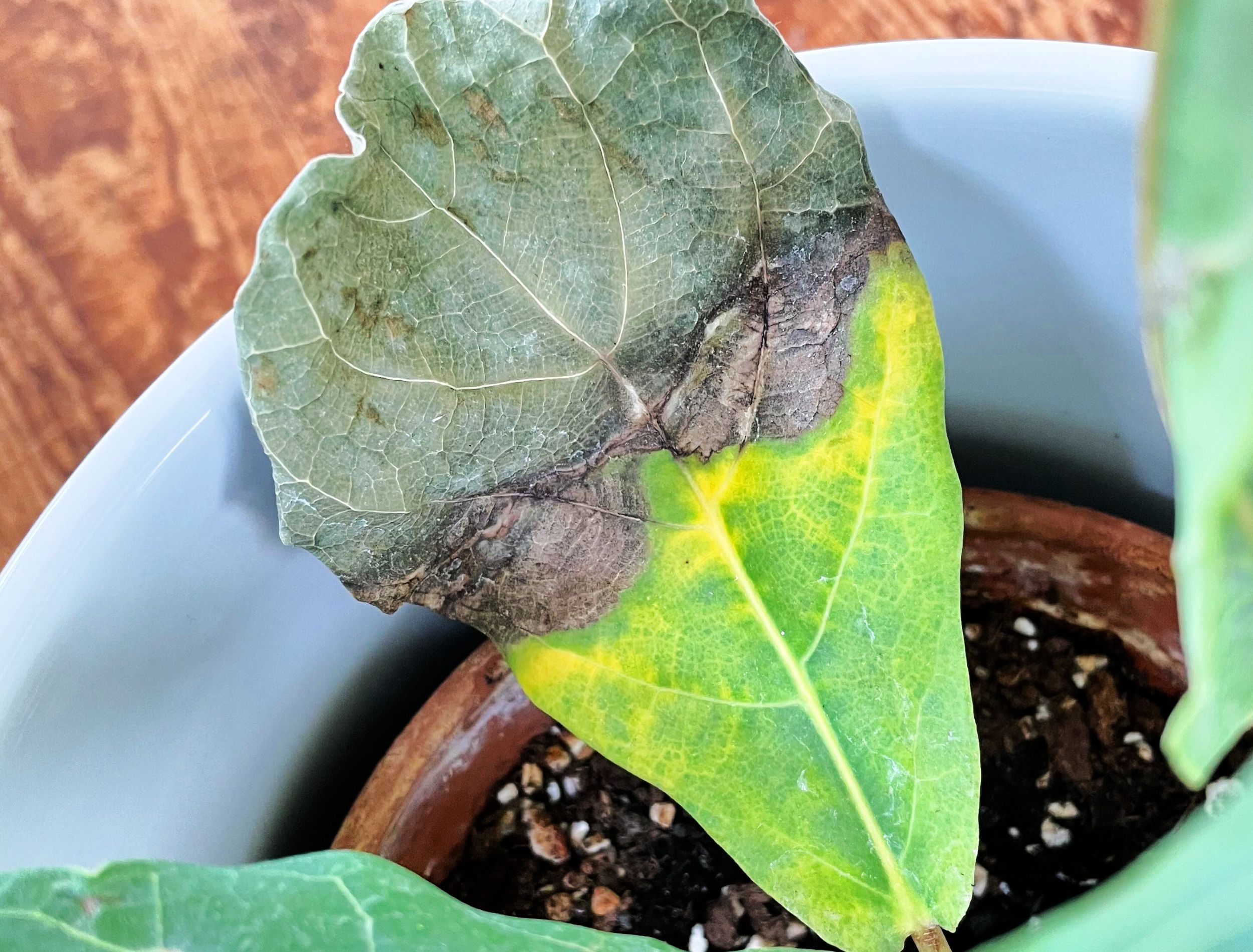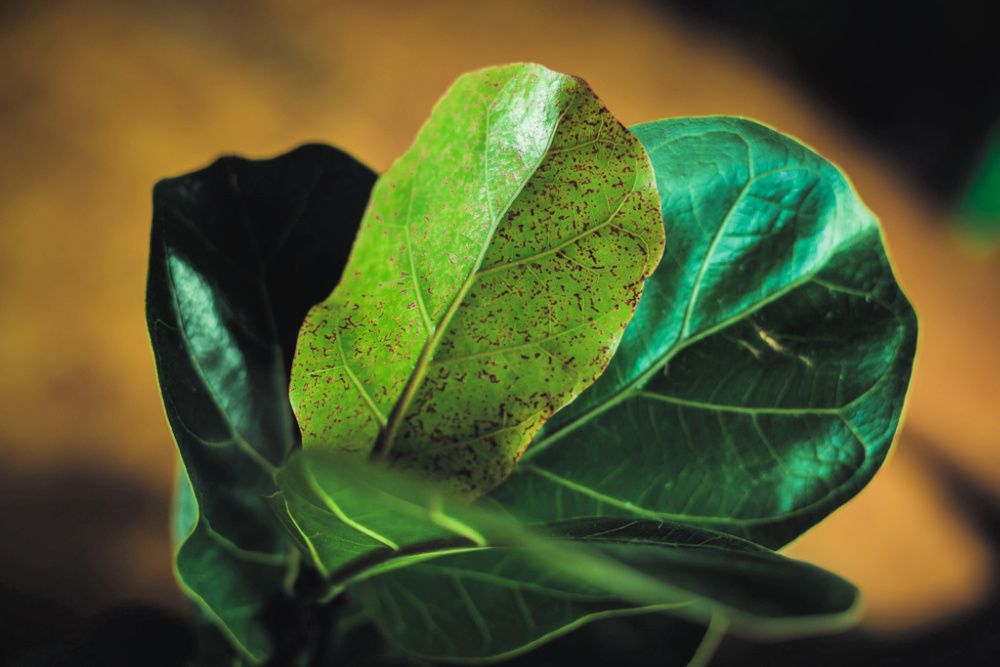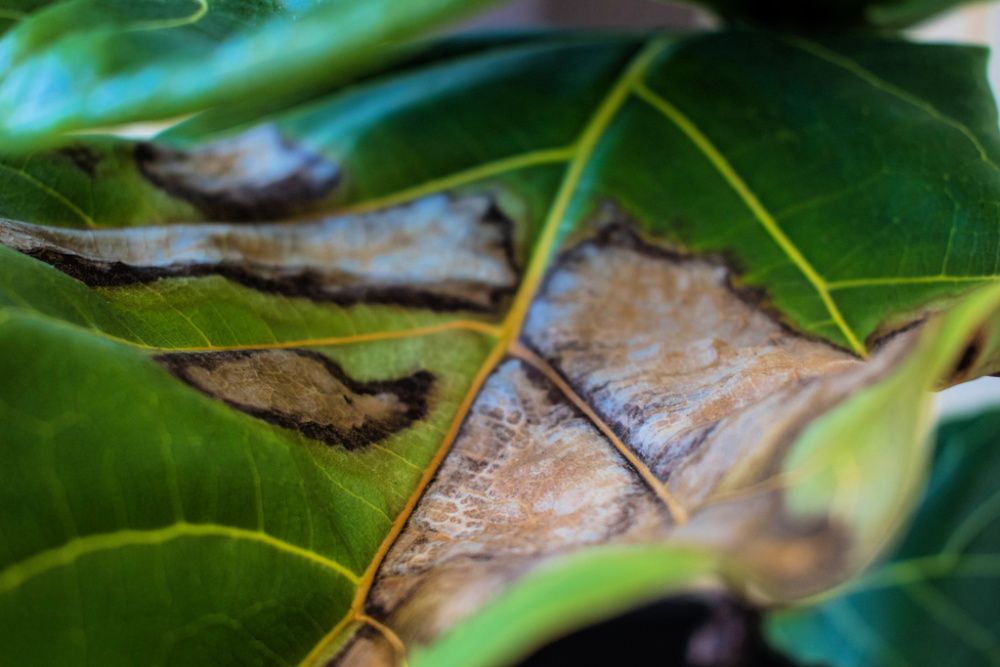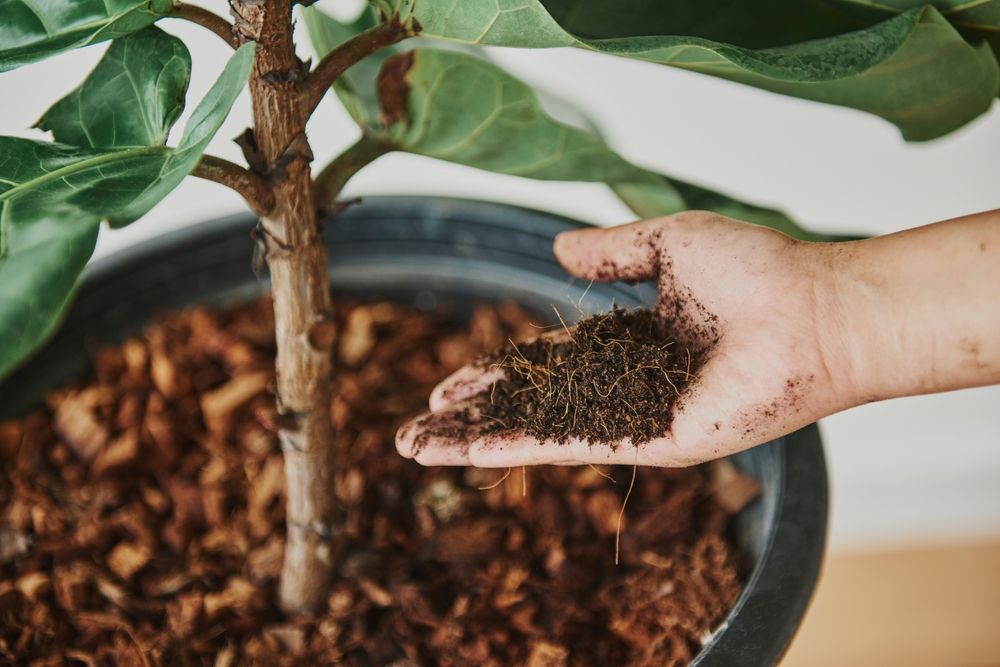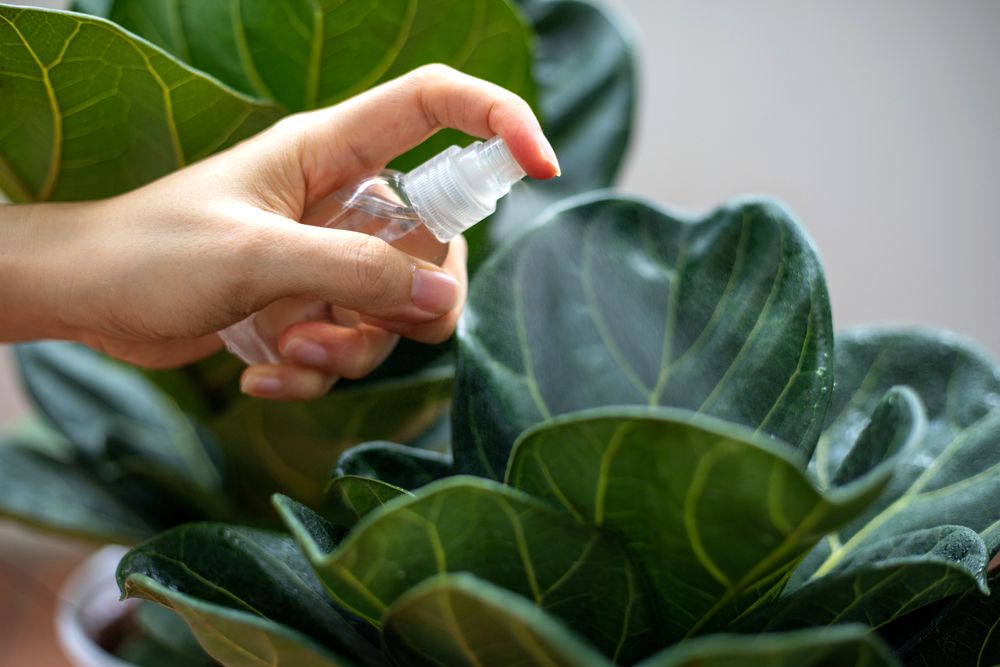Adorned by stunning deep green and gleaming leaves, fiddle leaf figs are much-loved tropical houseplants. They carry a lovely green charm and can successfully brighten any nook or corner. However, the fiddle leaf fig plant has also earned a reputation for being high-maintenance. One of the most common concerns among plant enthusiasts is that it tends to develop brown spots on its leaves.
If you have faced the issue, don't worry! The good news is that a healthy care routine can treat and prevent brown spotting on your fiddle leaf figs.
Why Does it Happen?
Image credits: Przemyslaw Zielinski via Shutterstock
Your fiddle leaf fig may be developing brown spots for several different reasons, such as:
Inefficient Soil Drainage – The appearance of brown spots on or around the plant's roots indicates root rot owing to improper soil drainage. This discoloration typically extends to the bottom of the roots and signals an apparent health issue. It spreads through the entire plant if you do not treat the condition in time.
Bacterial Infection - Bacterial infections are common among fiddle leaf figs and usually occur due to water damage or injury. The leaves develop tan brown spots when affected by a bacterial disease. The spots also appear across the leaves as opposed to the edges. You will also notice symptoms such as wilting and slower plant growth.
Inconsistent Watering Patterns – Fiddle leaf figs demand a consistent watering schedule: excessive watering or underwatering triggers leaf browning. Lack of moisture hardens the soil and dries out the plant. Overwatering, on the other hand, is a common cause of death of fiddle leaf figs. Excessive moisture leads the roots to rot and damages the leaves.
Incorrect Lighting – Fig trees thrive on adequate natural sunlight. However, don't place the plant in a spot that receives harsh sun rays. Direct sunlight triggers overheating and cause sunburns in the form of brown edges.
Excessive Cold Temperature – The plant is negatively affected by cold drafts. You will notice that the leaves lose their sheen, droop, and form brown spots. This commonly occurs when the plant lives in a room where the air conditioner runs all day. It may also happen during extreme winter seasons. In the home temperatures, from 70 to 80 degrees Fahrenheit is ideal.
Lack of Humidity – Fiddle leaf figs are susceptible to a lack of humidity. The leaves begin to dry out. They may also fall off if exposed to this environment for too long. The humidity should remain above 50 percent to keep this plant happy.
Hue Matters
Image credits: Kara Knight via Shutterstock
Brown spots can develop due to different reasons. Quite often, the type or color of the spot can help you understand the possible culprit.
- Dark Burnt Spots - Leaves exposed to harsh direct sunlight form dark spots. On the other hand, leaves on the base of the plant may develop similar colored spots owing to a lack of light exposure.
- Soft or Light Spots - In case of excessive water in the soil, the leaves develop lighter or softer spots around the veins of the leaves.
- Crisp Brown Spots - Underwatering or lack of hydration leads to the formation of crisp brown spots on the entire leaf.
Pay attention to the types of spots and colors! Most often, the variation tells you about your plant's health.
How to Prevent Browning of Leaves
Image credits: Rawpixel.com via Shutterstock
Now that you know why your fiddle leaf fig is forming brown spots, it's time to take preventive measures so it doesn't happen again.
- Depending on how far the spotting has traveled, gently trimming off the damaged leaves might be enough to do the trick. If the roots are affected, repot the plant using well-draining organic soil.
- Let the plant bask in good natural light for a few days. The natural element is an ultimate elixir for fiddle leaf figs. If you live in a region with a warmer climate, move the plant outdoors but under good protection from direct sunlight.
- Go easy on the watering cycle. Allow the plant recovery time, as excessive moisture further worsens the condition.
Growing Healthy Fiddle Leaf Figs
Image credits: AngieYeoh via Shutterstock
To successfully envision the care of any plant, you must try to replicate its native environment. The fiddle leaf tree grows in the tropical rainforest. Thus, place your indoor plant in a room with good air circulation with a well-lit window that does not receive direct sun rays. Rotate the plant periodically to ensure that every side gets a good dose of light.
Do not overwater! Deeply water the plant every once a week or observe the moisture in the soil. Rehydrate the plant only when the top 2 inches of the soil feel dry.
Fiddle leaf figs can thrive in the same pot for several years. If you think the roots are overflowing, repot the plant into a one-size bigger container in springtime. Offer your plant organic fertilizers during summer or spring for some growth support. Remember to feed them in moderation.
Pro Tip – Gently wipe off the dust from the leaves using a damp cloth. This routine helps maintain healthy photosynthesis and reduces the risk of mites-infestation.
Do Not Fret!
Like every passionate houseplant parent, you certainly care about the health of your fiddle leaf fig. However, there is no reason to fret. Follow the simple tricks and restore the beautiful look of your tropical evergreen. It won’t be long before your fiddle leaf fig plant thrives in all its glory.
Loved all that you learned? Don't forget to share this article with your fellow gardeners and save them from worry.
May the gardening force be with you!

